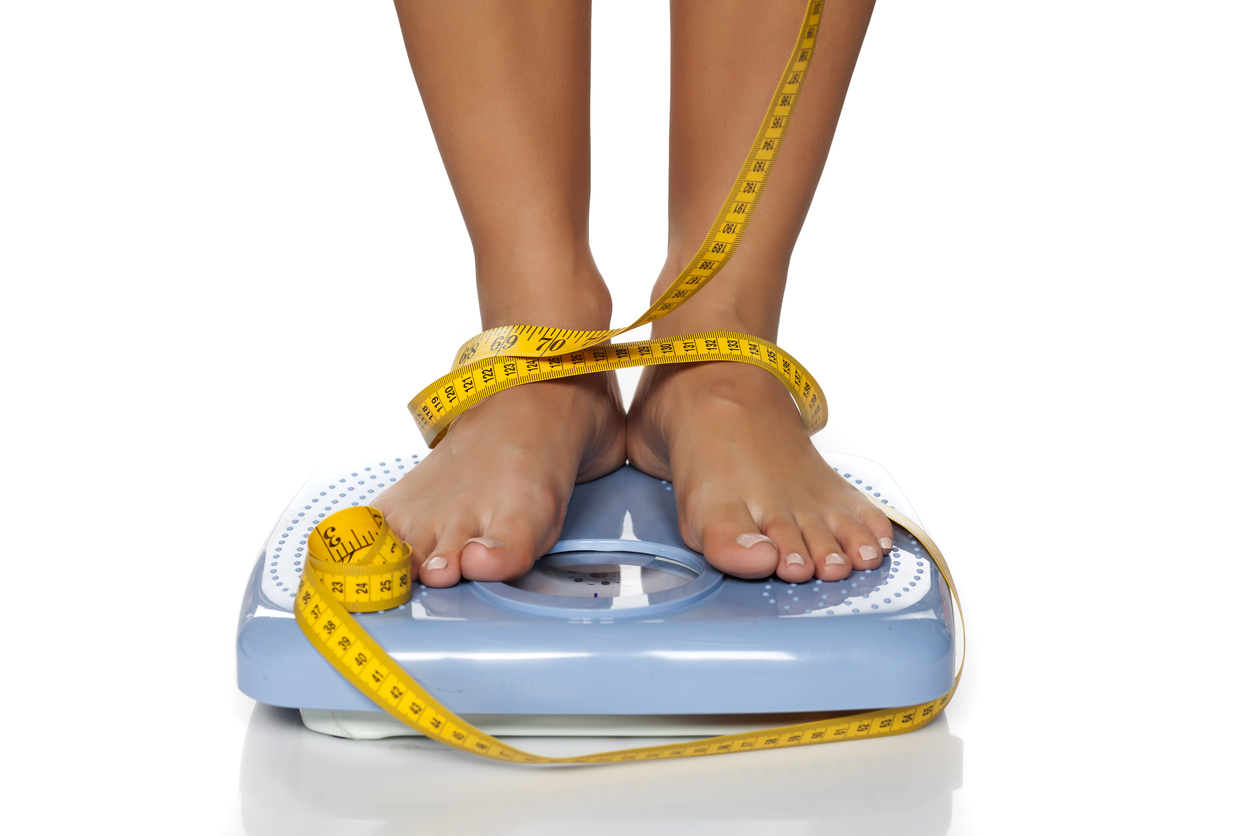There are few moments more exciting than finally seeing that magic number pop up on the scale… the elusive “goal weight.” While this achievement is definitely worth a celebration, it might be a good idea to take a victory lap rather than indulging in a full plate of your grandma’s lasagna. Because what can be even harder than dieting? Maintenance!
Reaching your ideal size is only half the battle. Instead of relaxing, you need to develop a solid plan to maintain that number and avoid the common slide back up the scale. Knowing the reasons why many dieters regain weight can help you with your maintenance plan and keep you rocking those skinny jeans you worked so hard to get into.
So listen up! Understand the missteps of other dieters so you can avoid falling into the same traps.
The “Biggest Loser” Problem
We’ve all seen the jaw-dropping finale of this hit show when svelte contestants cross the stage after losing up to half their body weight. As amazing as that is, researchers at the National Institute of Health followed 14 participants for six years after the show’s end and found that the majority of them regained most of the weight lost. The rapid weight loss resulted in a slower metabolic rate that made it more difficult for participants to stay slim.
While this is an extreme example, the same thing happens on a smaller scale for many dieters. Having a large amount of weight to lose can feel overwhelming, especially when you want to be ready for swimsuit season in a few months. You might think the 4 to 8 pounds of recommended weight loss per month sounds “too slow” when you’ve got 50 pounds to lose. So you look for a quick solution instead, which often results in even faster rebounds.
We’ve all heard of (or maybe tried) fads like the lemonade diet, the cabbage diet, the grapefruit oil-sniffing when hungry diet, and while such extreme plans can cause you to shed pounds quickly, the results are usually short-lived. These tactics wreck havoc on your metabolism. Plus, you’re HUNGRY, which can lead to binging, followed by your starved body clinging to fat and calories in fear that you’ll deprive it again. It’s a vicious cycle! Trust us, this is one ride you definitely do not want to get on.
In order to lose weight and keep it off, successful dieters accept the fact that real change takes time. They set realistic weight loss goals based on their body, fitness level, and metabolism…not the date of their upcoming high school reunion.
Letting Setbacks Snowball
Whether you’ve reached your goal weight or just passed the 10-pound marker, small derailments can snowball into major setbacks. Many dieters fall prey to “all or nothing” thinking, which can lead to weight gain.
Are you the type of person that eats pizza and finds yourself thinking “well, I already blew it for the day, I might as well enjoy wine and dessert too”. If yes, it’s important to plan ahead and develop strategies for handling treats before you fall off the wagon.
When birthdays, anniversaries or other holidays roll around, decide beforehand how many indulgences you will allow yourself. Once you’ve eaten that, get right back on plan. When the occasional unplanned slip-up happens, and it will, be prepared!
Know ahead of time what you’ll do when you mindlessly reach for a Girl Scout cookie. Don’t beat yourself up and use it as an excuse to eat the entire box. Have a positive mantra ready, such as “all is forgiven, move on!” Then drop the cookies and get back on plan.
Successful dieters retrain their brains to adopt a ‘no harm no foul’ mentality. They know one slip-up doesn’t have to be the end of the world.

Sitting Disease
Your resting metabolic rate (RMR) is all the activity going on inside your body when you are not physically active. How many calories you burn just by breathing is an important factor in whether or not you will maintain weight loss. The name of the game is to increase your RMR as much as possible. Here’s the rub… dieting tends to lower RMR.
How can you raise your RMR? By activating your soleus muscles. These are muscles deep in the leg that help keep blood flowing through our bodies. They are like ‘secondary hearts’, and allow us to maintain our normal rate of metabolic activity during sedentary activities.
Unfortunately, our modern lifestyle, which includes sitting at a desk all day, does NOT help our soleus muscles do their job. “Sitting disease” causes blood and other fluids to pool in our lower extremities, thereby lowering our RMR and reducing the number of calories we burn daily.
What’s the good news? You can train your soleus muscles to get the blood pumping again (even when you’re sitting) and get your RMR back up. These muscles are deep within the leg, and therefore require training of long duration and low intensity. Tai chi is an effective way to build up the soleus muscles, as are some forms of yoga. It’s also a good idea to limit the amount of time you spend sitting and to take frequent movement breaks to keep blood and fluids from pooling.
Make It A Lifestyle
Long-term successful dieters tend not to think of it as a “diet”, but more like a lifestyle. Diets have start and end dates. Thinking you’re “done” can set you up to revert back to old habits, which leads to scale creep. Find healthy things you’ll actually enjoy eating for the long haul. Sometimes all it takes is cooking a vegetable a different way to realize it’s delicious or adding new fruits to your green smoothie to make it enjoyable.
It’s also really important to find fun ways to be active when you switch to maintenance mode. Experts state that 60-90 minutes of daily exercise is required for weight loss, but only 20-35 is necessary to maintain your weight. Find something you enjoy like biking, dancing, yoga or hiking, and keep at it. Even better, do it with a friend!
By thinking of the changes you’ve made as your new lifestyle, you’ll be able to avoid feeling deprived and instead find joy in your full life. Apply these principles and you’ll have no trouble maintaining your healthy body and feeling better than ever.












